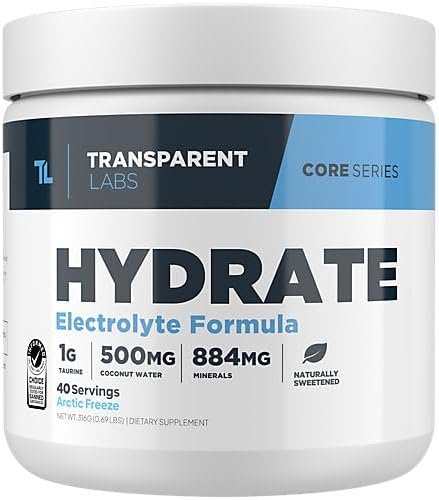You stroll inside the gym. The sauna sits right there, appearing warm and inviting. But when should you utilize it? This pick puzzles many fitness fans. Should you sweat first, then pump iron? Or lift weights, then relax in the heat? The answer might surprise you. Your timing matters more than you realize.
Heat affects your body in different ways at different times. Some persons adore warming up before workout. Others prefer cooling down after their practice. Let’s go deep into this popular topic. We’ll study what science says about sauna before or after workout time. By the end, you’ll know just when to enter into that steamy room.
How Heat Changes Your Body
Saunas produce magic inside your body. Your heart starts racing quicker. Blood flows to your skin. Sweat begins pouring out. Most saunas reach 150 to 195 degrees. That’s incredibly hot! Your core temperature raises by 2 or 3 degrees. This begins a chain reaction of changes.
Blood vessels widen wide. More oxygen goes to your muscles. Stress hormones diminish. Happy hormones increase instead. These tweaks can increase your workout. They can also harm it. Everything depends on timing.
The Case for Pre-Workout Heat
Benefits of Pre-Workout Sauna Use
Using the sauna before workout has definite benefits. First, heat heats your muscles rapidly. Cold muscles tear easily. Warm ones stretch better and move effortlessly. Many pro players use heat chambers before games. Their coaches know something crucial. Warm muscles function better and get hurt less often. Better blood flow improves too. More blood supplies more nutrients to active muscles. Your body prepares for action faster than normal.
Potential Drawbacks of Pre-Workout Heat
However, drawbacks exist. Heat can zap your vitality before you start exercising. You can feel fatigued and sluggish. Performance often diminishes as a result.
Losing water becomes risky too. You sweat in the sauna first. Then you sweat during your workout. This twofold loss can pose major consequences.
What Research Shows About Pre-Workout Saunas
Scientists have conflicting emotions about heating up before exercise. Some studies suggest better flexibility following sauna sessions. Others exhibit lower strength and power. One 2018 study examined athletes who utilized saunas before training. Their muscles warmed up 30% faster than usual. Joint mobility increased by 15% too.
But another study found worrying results. Athletes who heated up before workouts felt exhausted considerably sooner. Their strength declined by 8 to 12% throughout the first 20 minutes of training. Temperature control becomes harder as well. Your body already works to cool down from the sauna heat. Adding exercise makes this job much more difficult.
When Pre-Workout Heat Makes Sense
Ideal Scenarios for Pre-Workout Sauna Use
Some scenarios tilt sauna before or after workout scheduling toward the “before” option. Light workouts pair wonderfully with pre-sauna sessions. Yoga sessions work tremendously after heat exposure. Stretching sessions benefit most from pre-workout heat. Warm muscles stretch more without pain. Dance lessons and martial arts improve greatly too.
Cold weather workouts may benefit from pre-heating. If you’re running outside in winter, a sauna helps prepare your body. Temperature adaption happens more smoothly.
People with stiff joints should consider pre-workout heat therapy. Arthritis pain frequently decreases after sauna use. Movement seems less uncomfortable and more natural thereafter.
Why Post-Workout Saunas Win
Most fitness professionals prefer post-workout sauna sessions. This scheduling delivers greater benefits with fewer dangers. Your body is already warm from exercising. Recovery speeds up substantially after workouts. Heat helps flush waste products from weary muscles. Lactic acid clears out faster than normal. Soreness fades within hours.
The relaxing effect works better after exercise also. Your body is ready to wind down and recover. Stress goes away in the pleasant heat. Sleep improves when you sauna after working exercise. The temperature dip following indicates bedtime to your brain. Many folks experience deeper, more peaceful sleep.
Recovery Magic of Post-Workout Heat

Post-exercise sauna use activates extraordinary recuperation mechanisms. Growth hormone synthesis jumps by up to 200%. This helps develop and repair muscular tissue quickly.
Blood stays flowing to weary muscles for hours. Nutrients continue reaching damaged fibers. Healing happens faster than it would naturally.
Swelling goes down too. The heat works like a natural medicine. Pain passes away while muscles relax totally.
Mental rehabilitation is also vital. The quiet, warm atmosphere helps process your workout stress. Worry chemicals level out naturally in the heat.
What Science Says About Post-Workout Saunas
Research strongly supports utilizing saunas after exercise. Finnish scientists monitored athletes for six months straight. Those who used post-workout saunas had fewer injuries overall.
Recovery time fell by a whole 24 hours on average. Athletes felt ready for their next training session far sooner. Performance stayed strong throughout the whole study period.
Another study analyzed muscular growth trends. People that used post-workout saunas gained 30% more muscle mass. The heat appears to promote protein manufacturing in their bodies.
Heart health improved dramatically too. Regular post-workout sauna users developed greater cardiac fitness. Their resting heart rates lowered to healthier ranges.
Safety Rules You Must Follow
Essential Safety Guidelines
Whether you select sauna before or after training, safety comes paramount. Losing too much water poses the largest threat to your health. Drink water before entering the sauna. Keep sipping during your session. Continue drinking for hours thereafter.
Time limits save lives. Never spend more than 20 minutes in intense heat. Start with shorter sessions if saunas are new to you. Listen to your body’s warning signals always. Dizziness implies depart right now. Feeling ill is another warning indicator. Don’t push through any discomfort.
Some health issues make sauna use dangerous. Heart concerns require doctor approval initially. Pregnancy impacts how your body manages harsh temperatures.
Water: Your Best Friend
Proper Hydration Guidelines
Proper hydration becomes your lifeline with sauna use. Drink 16 to 20 ounces before entering the hot room. Keep sipping little amounts during your session. After-sauna hydration matters just as much. Replace every drop you lost via sweating. Sports beverages help if you’ve been sweating considerably throughout activity.
Check your urine color as a simple guide. Light yellow signifies good hydration levels. Dark yellow suggests you need extra fluids immediately. Weight loss from sauna use is largely water, not fat. Don’t mistake this momentary loss for true fat burning. Replace those fluids immediately and completely.
Temperature and Time Guidelines
Optimal Sauna Settings
Traditional saunas perform best between 175 and 195 degrees. Infrared saunas run cooler at 120 to 140 degrees. Both types give benefits when timed right.
For pre-workout use, limit sessions to 10 or 15 minutes maximum. This warms muscles without wasting your energy fully. Cool down briefly before starting workout.
Post-workout sessions can linger a bit longer. Fifteen to 20 minutes works nicely for most healthy folks. Enter the sauna within 30 minutes after finishing your workout.
How often you sauna matters too. Daily use is fine for healthy persons. Start with 3 or 4 times a week if you’re a beginner.
Different Workouts Need Different Approaches

Weightlifting and Sauna Timing
Heavy weightlifting pairs better with post-workout sauna sessions. Your muscles need recovery more than they need warming up beforehand. Heat helps repair small muscle damage from lifting.
Cardio Workouts and Heat Therapy
Cardio workouts present a problematic situation for sauna timing. You’re already hot and sweaty from running or biking. Adding sauna heat takes extra care with hydration.
High-Intensity Training Considerations
High-intensity workout exhausts your whole system quickly. Post-workout sauna helps reset your body and mind. The peaceful setting assists mental healing greatly.
Endurance Training Benefits
Endurance training benefits from both timing schemes. Pre-workout heat can boost cold-weather performance. Post-workout heat helps up recuperation between training sessions.
Choosing What Works for You
Personalizing Your Sauna Routine
The optimal sauna timing relies on your unique fitness goals. Want increased flexibility and joint movement? Try pre-workout heat sessions. Need faster healing and better sleep? Go with post-workout timing.
Your present fitness level has a key effect in this selection. Beginners should keep to post-workout sessions for safety. Advanced athletes may manage both tactics more safely.
Personal preference counts for a lot too. Some folks appreciate starting exercises feeling warm and loose. Others enjoy concluding with tranquil leisure in the heat.
Try both ways for several weeks each. Track how you feel and how well you perform. Let your body’s responses lead your final decision.
Mistakes That Cause Problems
Common Sauna Errors to Avoid
Many people spend too long in saunas without realizing the hazard. This leads to major overheating and health hazards. Set a timer and stick to it faithfully. Skipping appropriate hydration is another common and deadly mistake. Start drinking water before you feel thirsty at all. Thirst already signifies the beginning of dehydration.
Eating heavy meals before sauna use creates circulation difficulties. Blood flows to your stomach instead of your skin. This makes temperature control much tougher for your body.
Alcohol and saunas form a deadly combo. Both influence your body’s natural cooling processes. Save any alcohol for after your sauna session ends.
Building Habits That Last
Creating Sustainable Sauna Practices
Start gently with whatever new sauna routine you pick. Your body requires time to adapt to heat stress healthily. Begin with shorter, colder workouts at start.
Consistency beats intensity every single time. Regular short sessions work far better than occasional long ones. Make sauna use a healthy habit, not a painful punishment. Track your progress and how you feel over time. Note your energy levels, sleep quality, and recovery speed. Adjust your program based on real results, not assumptions.
Don’t force sauna use when you feel sick or extremely exhausted. Skip sessions when your body requires other things. Listen to your gut cues above all else.
Why Everyone Responds Differently

Individual Factors in Sauna Response
Heat affects people in diverse ways based on several factors. Age, fitness level, and overall health all influence sauna responses. What works flawlessly for others might not work for you. Some people are natural heat enthusiasts who thrive in high temperatures. Others struggle with even slight heat exposure and prefer cooler environs.
Medical issues influence everything about sauna safety and timing. Blood pressure disorders affect how your body handles heat. Heart diseases necessitate extra doctor-approved measures. Certain drugs interact with heat therapy in unanticipated ways. Some medicines impact your body’s temperature control mechanisms. Always check with your healthcare provider first.
Getting Maximum Benefits Safely
Optimizing Your Sauna Experience
Smart sauna use improves advantages while reducing any hazards. Choose temperatures that meet your specific tolerance level exactly. Lower heat over longer durations generally works considerably better. Combine sauna sessions with other established rehabilitation strategies. Gentle stretching, massage therapy, and decent sleep compound all the benefits. Think about heat as one great weapon in your wellness toolkit.
Monitor your body’s signals constantly during every session. Heart rate, breathing patterns, and comfort levels tell you everything you need to know. Trust these internal signals over any external timer. Create a sensible post-sauna procedure for every session. Cool down gently with a lukewarm shower first. Avoid ice-cold water shortly after heat exposure, as this shocks your system.
The Bottom Line
Final Recommendations
The sauna before or after workout argument has a clear winner for most fitness aficionados. Post-workout sauna use gives higher advantages with much less health hazards overall. Your body recovers faster and more thoroughly after exercise. Muscles regenerate themselves rapidly. Sleep improves dramatically. Stress melts away naturally in the comforting heat.
However, individual demands vary widely from person to person. Some people actually flourish with pre-workout heat treatments. Others function better with post-workout rest time. A rare handful gain from both time techniques. Safety must always come first in any sauna routine. Proper water, realistic time limits, and listening to your body prevent significant complications. Start gently and build up your tolerance slowly over time. Finding what works for your individual body and specific goals takes patience. Try different tactics over several weeks or months.
Track your genuine outcomes carefully and adapt your practice accordingly. Remember that consistency counts more than flawless timing every single session. Regular sauna use, whether before or after workouts, delivers enduring health benefits. Make it a sustainable and fun element of your exercise lifestyle.
Frequently Asked Questions
How long should I wait between working out and using the sauna?
You can join the sauna right after finishing your workout. There’s no mandatory waiting period at all. Your body is already warm from activity, making the transition seamless and natural. Just make sure you’re fully hydrated before entering the hot room.
Can I use the sauna every day safely?
Daily sauna use is perfectly safe for healthy folks. Start with 3 or 4 sessions per week if you’re new to heat therapy. Gradually increase frequency as your body adapts to the heat stress. Always prioritize how you genuinely feel over any rigorous schedule.
Should I shower before entering the sauna?
Yes, always shower before any sauna use. This eliminates sweat, lotions, and microorganisms from your skin surface. Clean skin helps you sweat more effectively during your session. It also keeps the sauna environment sanitary and enjoyable for everyone who uses it.
What’s the best temperature for sauna before or after workout sessions?
Traditional saunas operate best between 175 and 185 degrees for most individuals. Complete beginners should start at 160 degrees to build tolerance. Infrared saunas run at lower temperatures, usually 120 to 140 degrees. Always modify based on your personal comfort level.
How much water should I consume during sauna sessions?
Drink 8 to 12 ounces of water every 15 minutes while in the sauna. Start proper hydration at least 2 hours before your scheduled session. Continue drinking water for several hours after you finish. Sports drinks assist restore electrolytes if you’ve been sweating hard.
Can pregnant women safely use saunas?
Pregnant women should avoid saunas, especially during the vital first trimester. High heat can potentially impact healthy fetal development in unforeseen ways. Always with your doctor before utilizing any heat therapy during pregnancy or while attempting to conceive.
Can children safely use saunas?
Children over age 6 can use saunas with continual adult supervision. Limit their workouts to just 5 or 10 minutes at lower temperatures. Children lose water through sweat more faster than adults do. Watch them intently for any signs of distress or discomfort.
How do I tell if I’ve remained too long?
Warning indicators include excessive weariness, nausea, headaches, or severe dizziness. Your heart rate shouldn’t surpass 100 to 150 beats per minute during sessions. If you feel uncomfortable in any way, exit the sauna immediately without hesitation.


